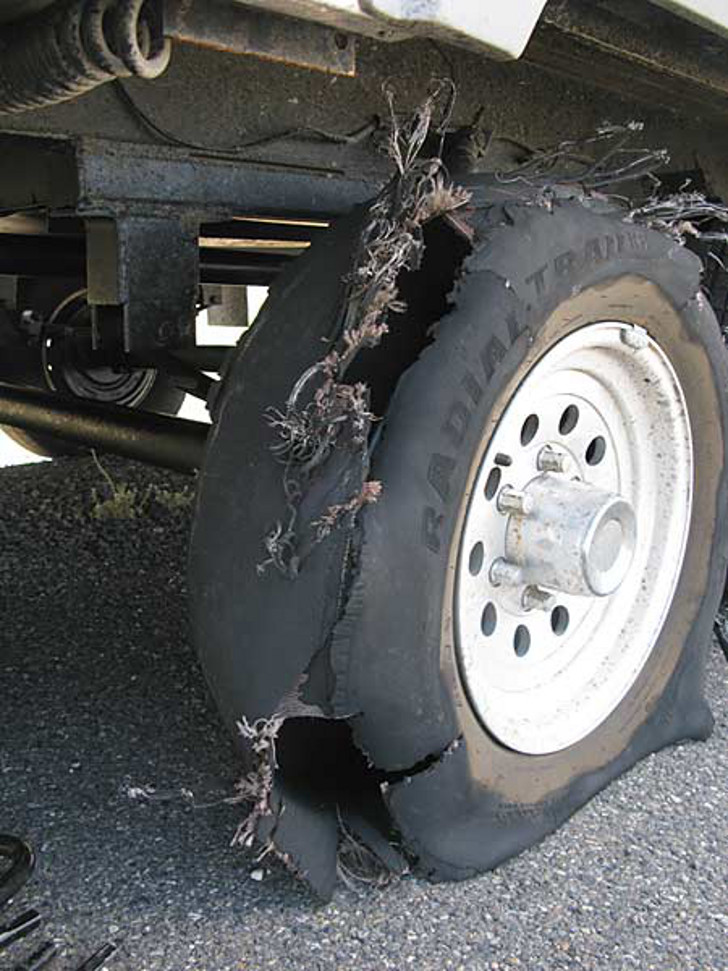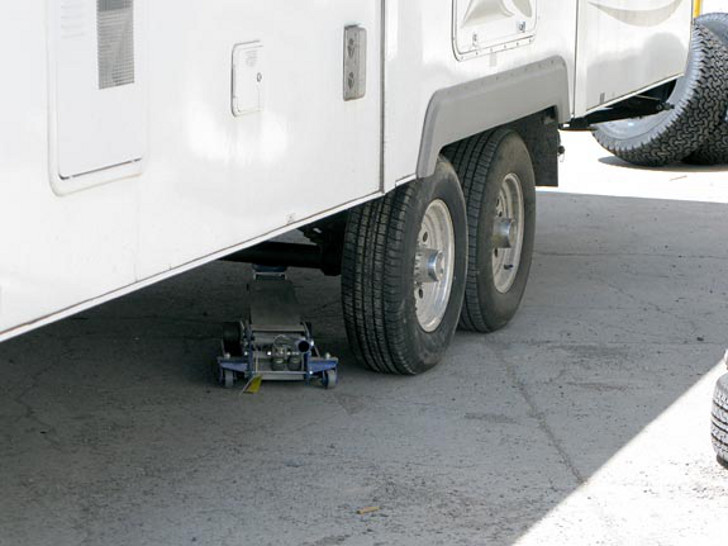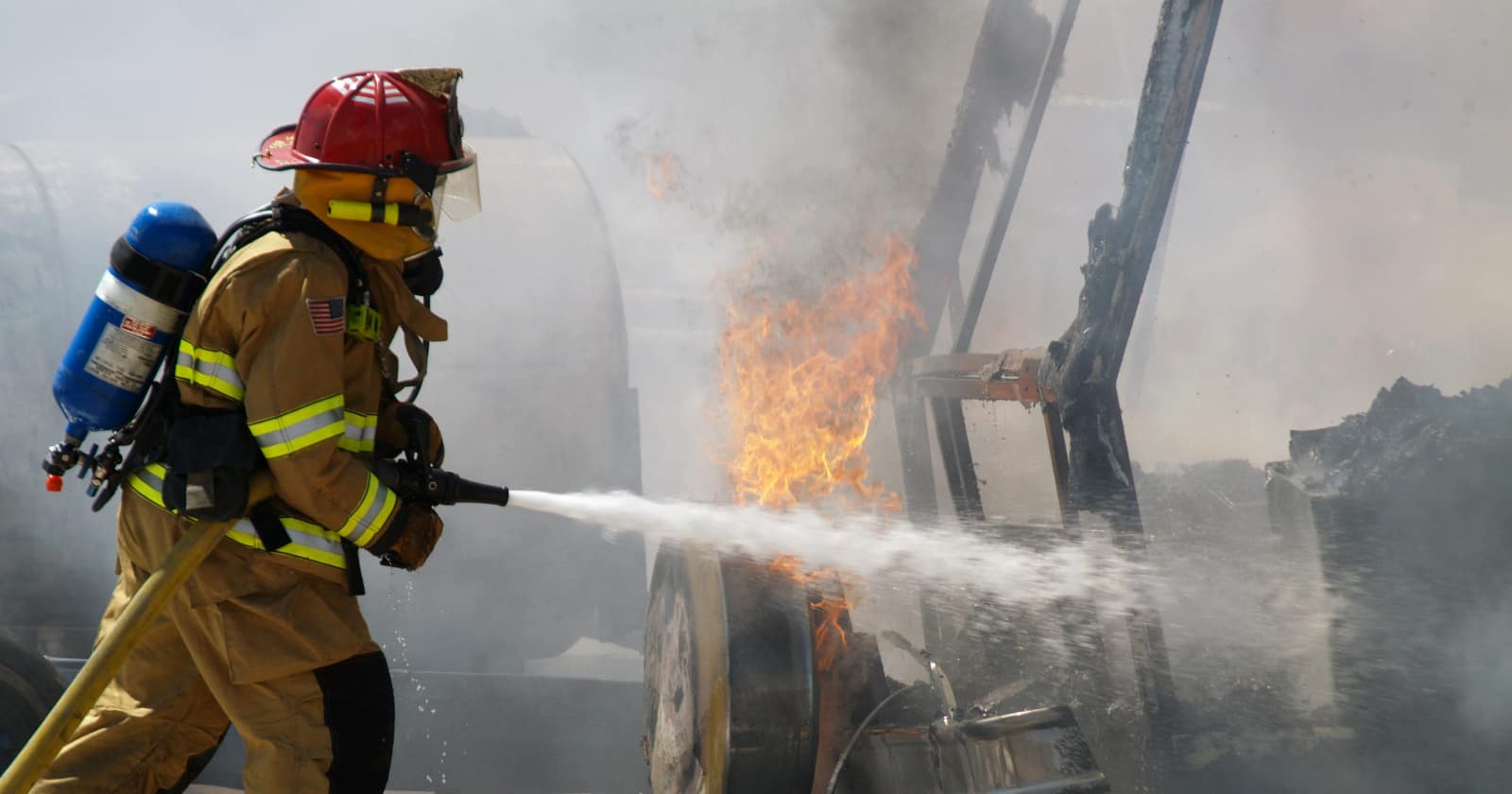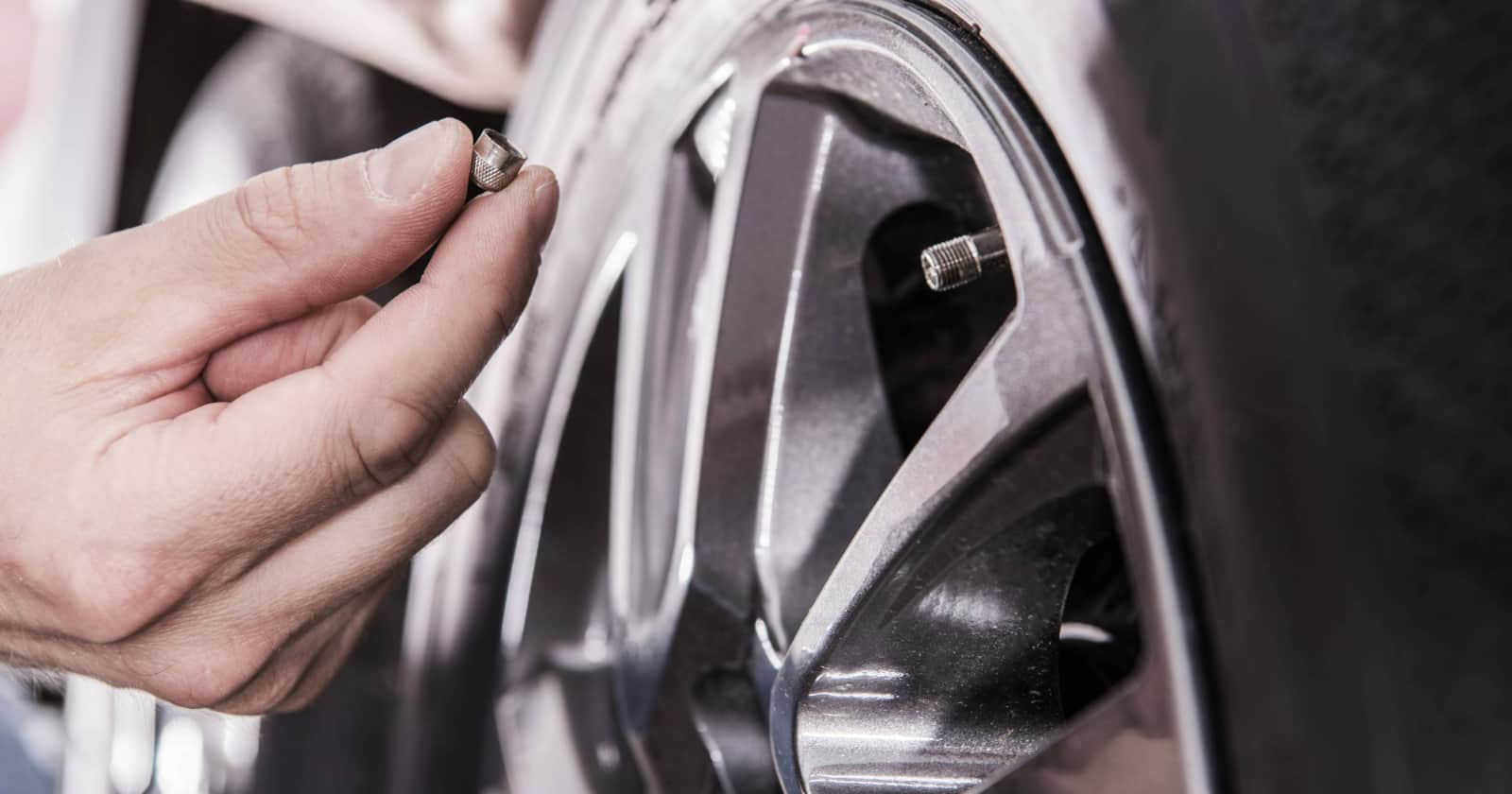One day while driving your RV down the highway and humming a happy tune, suddenly there’s a loud “thump” under your rig. That’s when you realize: “I just had an RV tire blowout!” Do you know what to do?
One RV tire blowout can ruin your whole day.

When you have an RV tire blowout, don’t do this:
The two most common reasons for any vehicle tire blowout are overloading the vehicle and over-inflating the tire. But when you suddenly have a RV tire blowout, you won’t care about that, you just want to get control of the rig and pull over. In order to do that, do you:
- A: Slam on the brakes
- B: Speed up and find a safe parking spot
- C: Slow down and keep driving until you see an exit?
Believe it or not, the correct answer is B: put the pedal to the metal! Although hitting the gas seems like a really dangerous thing to do when you have a RV tire blowout, it really is the safest action to take. According to Michelin Tire safety experts, hitting the gas and accelerating quickly and effectively “will help you maintain control of your RV” in this scary situation.
Michelin experts tell what happens when your RV tire suddenly goes flat:
When a vehicle’s front tire has a sudden loss of air, the front corner of the vehicle will drop, creating a side force that wants to pull the vehicle off the road. The strength of the side force depends on tire rolling resistance and vehicle dynamics like load weights.
Keep control and you’ll get back on the road.

Don’t slow down, whatever you do.
The slower you go, the more the horizontal forces will pull your rig to one side. You might even lose control this way! Instead of breaking, put your foot on the gas pedal and gradually speed up enough to stabilize the RV and drive it to a safe spot.
Accelerating will get power to the drive wheels and this is what helps you overcome side forces that want to pull your RV off the road. The same idea applies when you’re driving in strong crosswinds—speed up and keep a firm hand on the steering wheel so you can keep the rig in a steady, straight line.
It doesn’t matter if you have a front or rear RV tire blowout: both situations are handled the exact same way. The biggest difference between losing air in a front or rear tire is when a rear RV tire goes flat, you’ll still have two good front steering tires to help maintain control.
A front RV tire blowout is definitely scarier. Another small difference is that if you have a front RV tire blowout, your hands will feel it on the steering wheel, but if a rear tire goes flat your butt will feel it in the pilot seat.
Sudden tire air loss doesn’t mean losing control – as long as you don’t panic and hit the brakes. These tips apply for every vehicle in every situation, whether you’re driving your RV or a passenger car in any weather on any road.
This video could save your life:
Now that you know what to do in an RV tire blowout situation, be sure to learn about RV tire maintenance so you never have to experience one.




I had a blowout during a recent relocation of my fifth wheel. The guy pulling it actually placed a board behind the back GOOD TIRE after breaking the lug nuts on the blown out tire. He backed the rig onto the board and it elevated the rig high enough to slide the old tire off and a new tire/rim on..
I was really impressed with his actions which saved ALOT of time and energy.
He was a professional rv relocator and I was glad I hired him at that point!
Like Sid says. The author of this article did read the full context of that referenced expert advice and noticed that it applied to motorcoaches where the FRONT tire blew, rather than implying that this applies to all RV’s including travel trailers, right?
I don’t think the article applies to trailers, especially when pulling doubles. I hate blow outs, especially on interstates where they have traffic going two way when the other side is under construction. I try to stick to roads with a paved shoulder. I think the best thing to do is prevention. Avoid objects on the road and change trailer tires every four years no matter how many miles are on them. Don’t buy old tires, check the date of manufacture on the tire when purchasing and avoid new tires more than a year since manufacture. Get tires that are rated for more than your maximum weight of the trailer loaded by at least 10%. If you don’t know what your weight is then go to a weigh station such as at a truck stop and weight it. Inspect your tires before you leave for the day and look for rubber separation, nails and screws, also check for tears or slits in the sidewalls. Check the cold air pressure before each trip and it doesn’t hurt to check the torque on lug nuts. Trailers that sway back and forth slightly cause lug nuts to loosen. I place labels above each tire with the recommended max cold air pressure. An I do a walk around each time I get fuel, and maybe feel the treads to see how hot they may be. I’ve had a lot of trailer blow outs and one or two times where lugs nuts disappeared over the last 30 years of towing. Also when you get new tires, get a new spare as well. Since I have started this practice I and had very few tire is any tire problems.
I have had two blow outs on travel trailers before and speeding up and going fast will do more damage to the trailer. the steal belts will rip out the side of the camper.
It’s so annoying when people think “RV” automatically means “motorhome”. All vehicles used for camping are considered “RV’s”. Truck campers, tent trailers, 5th wheels, travel trailers, tear drop trailers, vans, etc. This article appears to only apply to motorhomes. We had a blow out on our travel trailer & didn’t even know it until someone drove along side us to let us know. Now we use a tire pressure monitor to keep track of trailer tire pressure.
A question. Why do most blowouts occur in very hot weather? Why is Amarillo the blowout capital of the US?
Exactly. What about a travel trailor??
So many things wrong. The only reason to speed up is for a front tire on the driving vehicle.
And the crosswind thing… if you have wind strong enough to be pushing you into another lane, you shouldn’t be driving fast anyways. A stopped vehicle and trailer can withstand more side wind than a moving one. We have all seen the videos of flipped over trailers on the freeway, and yet others parked seem to still be standing after a tornado.
The article seems to talk about motor homes but the illustrations are of trailers. Do the same rules apply?
Does this recommendation also apply when towing a trailer and it has a blowout?
You show the jack placed under the axle. I believe from what I have read that this is not a good practice since it can bend the axle.
The correct placement should be under the spring shackle or the trailer frame.
Two comments:
1) The tire in your ‘blowout’ picture is very bald, so if you don’t want a blowout check your tires and pressure frequently.
2) I had an occasion on a remote gravel road in Alaska where I had and heard a blowout on a dual axle trailer, front right tire.
The road was heavily curved to allow for drainage, and I pulled off to the right, used a ramp on the ‘good’ rear tire, and
replaced the blown-out front tire. All the tire pressures were then normal. As I drove down the road, I noticed on my tire
pressure monitor that the ‘good’ right REAR tire was losing pressure slowly. It turned out that whatever blew out my front
right tire had also struck the inner sidewall of the rear tire, causing the leak. I got that one replaced, but I had been lucky.
If the rear had deflated while on the ramp and I was removing the front tire on a slanted road, I would have been crushed.
OK, I have been a truck & Bus driver all my life, and have had more than one blowout, both front and rear. Just maintain speed, control the steering, and slow down and stop. A rear blowout on a truck with duel tires will not affect you much at all, and most RV’s have either duel or tandem rear wheels. A front blowout can be a bit hairy as the wheel will try to jerk towards the bad tire, that is why you never drive a RV or truck with one hand and a relaxed grip, also do not wrap your thumbs inside the steering wheel, I have seen broken thumbs from the wheel suddenly jerking to one side. Maintain a firm grip on the wheel and slowly regain control and ease the vehicle back onto the road if it has drifted off, and maintain that control as you slow to the side and stop. A Safety-T-Steer steering stabilizer installed on your vehicle will be a great help in maintaining control in the case of a front blowout. The article says to speed up to regain control, what if you never lost it? or there isn’t room to speed up, like on a surface street.
What about a blowout on a travel trailer?